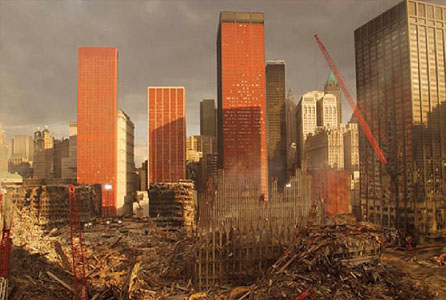
Nuclear Demolition
Back in the decade of the forties and fifties, nuclear interest started to spread all over the United States and the world. This was due primarily to the recent finalization of World War II. Later this was strengthened by the tension that grew between the U.S. and the Soviet Union. However, there were other uses for nuclear demolition that interested people. It wasn't all about war and fighting, but more about faster demolition and construction. Nuclear demolition was started as a brand new concept for the demolition of large and tall buildings in order to comply with established building codes and guidelines.
Difference Between Atomic & Nuclear Demolition
You certainly have heard the term atomic and the term nuclear. Even though you may have thought they are the same, in reality, they have two different meanings when it comes to demolition purposes. When atomic demolition nukes were first created – in the 1950s – they generated an atmospheric nuclear explosion. These nukes came to be known as SADM or MADM, which could be used to collapse any of the following structures:
- Bunker
- Bridge
- Tunnel
- Building
The munitions were usually of small or medium caliber, strong enough to bring any of those structures down in seconds. On the other hand, nuclear demolition refers to the thermo-nuclear charge that is placed deep under the target in order to generate an underground explosion. As you can see, the physical properties between the two concepts are different.
Nuclear Demolition Dynamics
As stated before, nuclear demolition requires the ammunition to be placed underground. In the case that the charge is not positioned correctly, for example if it’s not buried deep enough, the explosion will cause a type of cavity where two zones will appear and they will not be round. In nuclear demolition dynamics these two zones are known as crashed and as damaged. This will cause the force of the nuclear energy to be pushed upwards, towards the building. The radius of each zone will begin to increase until they over overlap. The inner layer of the crashed zone will expand to an estimated nine-hundred eighty-four feet, meaning that it will completely pulverize the target building.
Nuclear Demolition of Tall Buildings
In the above example a building of nine-hundred eighty-four feet in height is used, however, you’re probably wondering what happens with buildings that are taller; especially modern skyscrapers that have more than one-hundred floors. They won’t be as easy to demolish even if nuclear demolition is implemented. The zones that are generated after a nuclear explosion might not be able to reach the top of the building. What might end up happening is the lower part of the building will be heavily damaged, while the very top will remain structurally intact and undamaged. The solution to this problem might be using a nuclear charge that is stronger than the traditional one-hundred fifty kiloton charge used for the previous example. In any case, nuclear demolition is extremely effective if you want to pulverize a whole structure!
